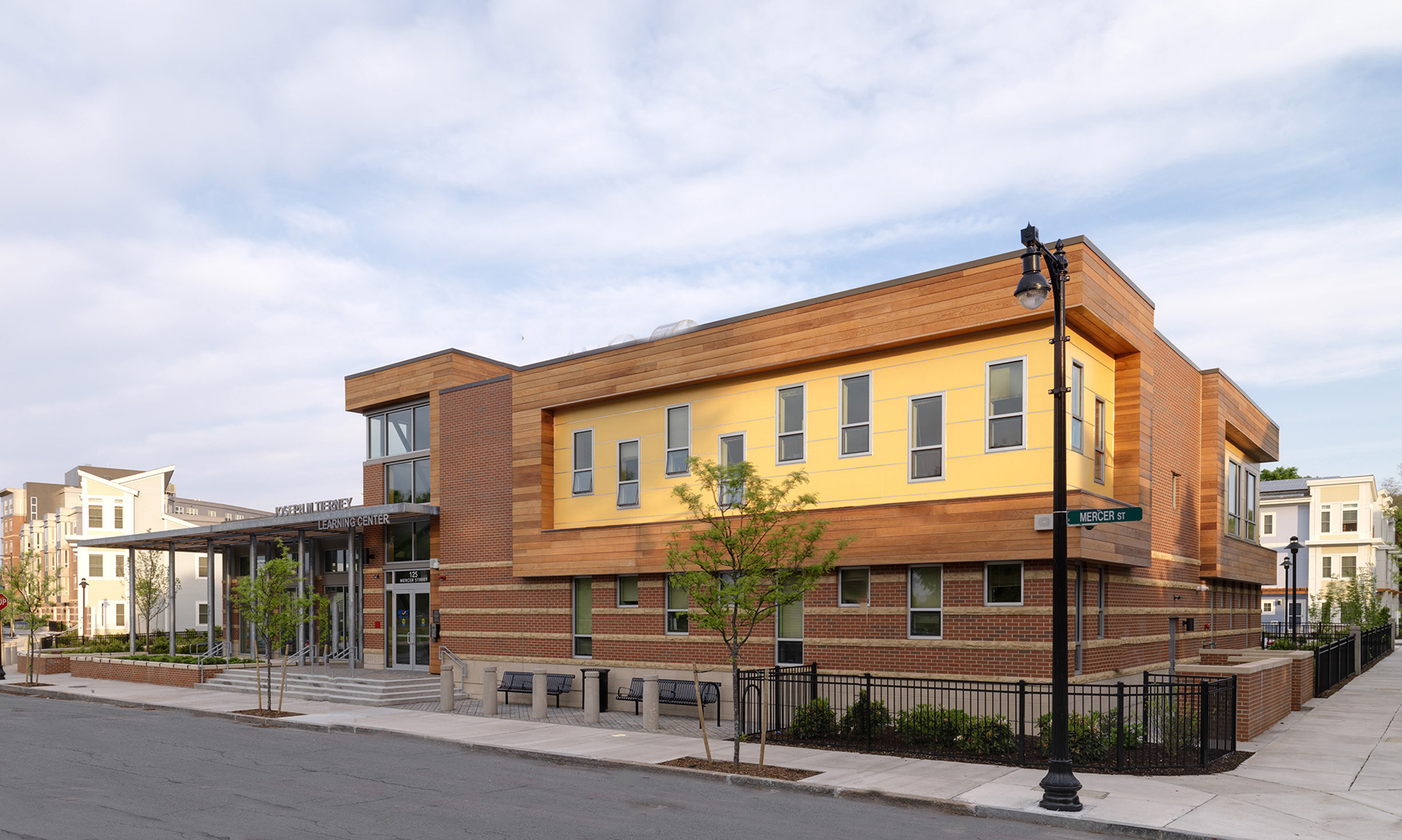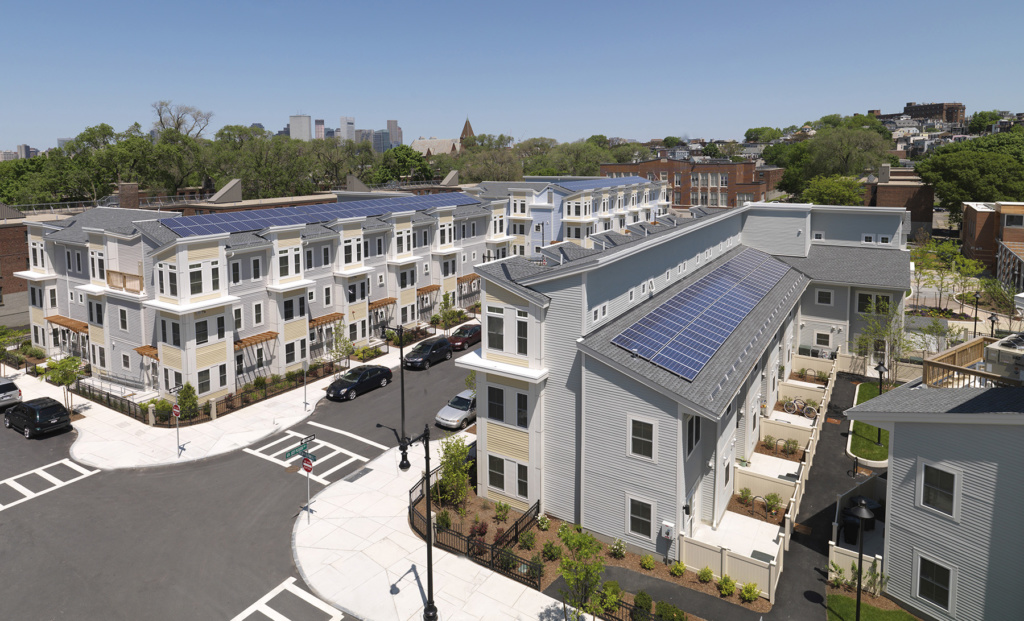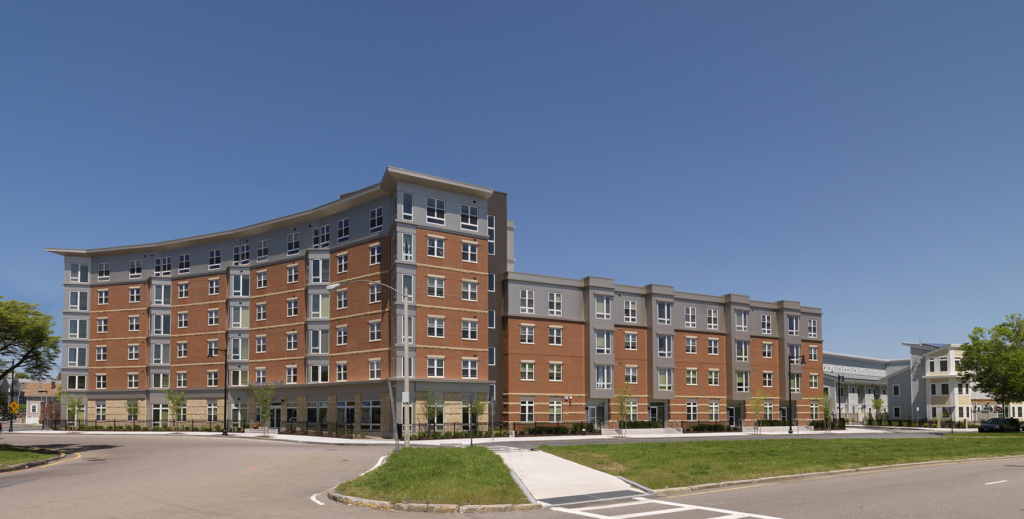

U.S. Department of Energy Better Buildings Challenge SHOWCASE PROJECT

The Anne M. Lynch Homes at Old Colony
Location: Boston, MA • Size: 140,000 sq. ft.
PROJECT BACKGROUND
Built in 1940, the Old Colony public housing development in South Boston was the Boston Housing Authority’s (BHA) largest property, and one of the most distressed with aging infrastructure and high energy consumption. After years of collaboration with residents, BHA hired Beacon Communities to redevelop the site. Beacon and BHA redeveloped the property into The Anne M. Lynch Homes at Old Colony, which provides deeply affordable housing in extremely energy-efficient buildings. Beacon has a long-term ground lease from BHA and operates the property as part of a public-private partnership with BHA.
The Anne M. Lynch Homes at Old Colony property was redeveloped according to a neighborhood master plan that eliminates the superblock-style isolation of the old public housing development, while emphasizing the site’s connectivity to neighboring streets, downtown Boston, and adjacent parks along the Boston waterfront. Phase One of the redevelopment included construction of 116 homes and was completed in December 2011. This was followed by an additional 129 homes constructed during Phase Two, which was completed in early 2014. Finally, Beacon constructed the 10,000-square-foot Joseph M. Tierney Learning Center on-site, which partners with neighborhood-based service providers in the Boston community to provide youth- based programming.

SOLUTIONS
New Ecology was the Green Building consultant on this redevelopment project and was involved in every aspect of greening. The redevelopment of The Anne M. Lynch Homes at Old Colony was designed to achieve a high level of energy and water efficiency and reduce energy costs for Beacon and its residents. Throughout the project, quality construction practices were followed to increase building durability, improve indoor air quality, and create a well-sealed and highly-insulated building envelope, which maximizes energy efficiency. High-efficiency heating and cooling systems, heat recovery ventilation, ENERGY STAR® windows and appliances (refrigerators, dishwashers, and washing machines), and WaterSense-certified ultra-low-flow water fixtures were installed throughout the Anne M. Lynch Homes at Old Colony in order to maximize efficiency and comfort for the residents.
All phases of the redevelopment used sustainable materials, including low-VOC paints, adhesives, and sealants. The project utilized recycled and locally-sourced materials, and followed strict waste diversion guidelines, further mitigating the environmental impact of the project. The last phase of the project also involved installing solar panels and purchasing renewable energy credits.

The sustainability efforts at The Anne M. Lynch Homes at Old Colony received a number of certifications, including LEED for Neighborhood Development (Gold), LEED BD & C (Community Building—Gold), LEED for Homes/Midrise (Platinum), and ENERGY STAR® Homes. The project was designed according to Enterprise Green Communities standards.

OTHER BENEFITS
In addition, residents reported:
Research conducted by the Harvard School of Public Health found that the redevelopment of The Anne M. Lynch Homes at Old Colony significantly reduced indoor air pollutants and improved residents’ health. Compared to conditions in Old Colony before the redevelopment, the research found:
- 57% reduction in particulate matter
- 65% reduction in NO2
- 93% reduction in nicotine levels
- Fewer instances of other pollutants, such as mold and pests1
- 47% drop in sick building syndrome symptoms
- Substantial reductions in asthma-related issues in children, including:
- 31% decrease in asthma attacks
- 24% fewer asthma-related hospital visits
- 21% fewer missed school days2
[1] Colton et. al. (2014). Indoor Air Quality Vs Conventional Multifamily Low-Income Housing. Environmental Science & Technology, 48, 7833-7841.
[2] Colton et. al. (2015). Health Benefits of Green Public Housing: Associations With Asthma Morbidity and Building-Related Symptoms. American Journal of Public Health, 105(12), 2482-2489.



